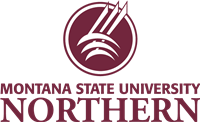What do they do?
Assemble, install, alter, and repair pipelines or pipe systems that carry water, steam, air, or other liquids or gases. May install heating and cooling equipment and mechanical control systems. Includes sprinkler fitters.
Also known as:
Commercial Plumber, Drain Technician, Fire Sprinkler Service Technician, Pipe Welder, Pipefitter, Plumber, Plumbing Installer, Plumbing Technician, Residential Plumber, Service Plumber, Sprinkler Fitter, Steamfitter
-
4.4%
Change
Ranks #51 in job growth rate1,370Job Openings
Ranks #16 in net job growth
-
Apex Technical School
Long Island City, NY
-
Hohokus School of Trade and Technical Sciences
Paterson, NJ
-
South Florida Institute of Technology
Miami, FL
-
Ranken Technical College
Saint Louis, MO
-
Dixie Technical College
Saint George, UT
Looking for colleges that offer a specific major? Use the College Match Tool to find your best-matched schools and discover your estimated Net Price!
- Doctorate or Professional Degree (<1%)
- Master's degree (1%)
- Bachelor's degree (5%)
- Associate's degree (8%)
- Some college, no degree (25%)
- High school diploma equivalent (46%)
- Less than high school diploma (15%)
People in this career often know a lot about:
- Building and Construction - Knowledge of materials, methods, and the tools involved in the construction or repair of houses, buildings, or other structures such as highways and roads.
- Mechanical - Knowledge of machines and tools, including their designs, uses, repair, and maintenance.
- Design - Knowledge of design techniques, tools, and principles involved in production of precision technical plans, blueprints, drawings, and models.
- Mathematics - Knowledge of arithmetic, algebra, geometry, calculus, statistics, and their applications.
- Customer and Personal Service - Knowledge of principles and processes for providing customer and personal services. This includes customer needs assessment, meeting quality standards for services, and evaluation of customer satisfaction.
- Administration and Management - Knowledge of business and management principles involved in strategic planning, resource allocation, human resources modeling, leadership technique, production methods, and coordination of people and resources.
People in this career often have talent in:
- Problem Sensitivity - The ability to tell when something is wrong or is likely to go wrong. It does not involve solving the problem, only recognizing that there is a problem.
- Finger Dexterity - The ability to make precisely coordinated movements of the fingers of one or both hands to grasp, manipulate, or assemble very small objects.
- Near Vision - The ability to see details at close range (within a few feet of the observer).
- Deductive Reasoning - The ability to apply general rules to specific problems to produce answers that make sense.
- Manual Dexterity - The ability to quickly move your hand, your hand together with your arm, or your two hands to grasp, manipulate, or assemble objects.
- Inductive Reasoning - The ability to combine pieces of information to form general rules or conclusions (includes finding a relationship among seemingly unrelated events).
- Trunk Strength - The ability to use your abdominal and lower back muscles to support part of the body repeatedly or continuously over time without "giving out" or fatiguing.
- Far Vision - The ability to see details at a distance.
People in this career often do these activities:
- Maintain plumbing structures or fixtures.
- Install plumbing or piping.
- Weld metal components.
- Measure materials or objects for installation or assembly.
- Mark reference points on construction materials.
- Cut metal components for installation.
- Fabricate parts or components.
- Create construction or installation diagrams.
- Plan layout of construction, installation, or repairs.
- Review blueprints or specifications to determine work requirements.
- Select construction materials.
- Inspect plumbing systems or fixtures.
- Direct construction or extraction personnel.
- Clean equipment or facilities.
- Install gauges or controls.
- Estimate construction project costs.
- Estimate construction project labor requirements.
- Record operational or environmental data.
- Inspect work sites to determine condition or necessary repairs.
- Remove parts or components from equipment.
- Replace worn, damaged, or defective mechanical parts.
- Repair worn, damaged, or defective mechanical parts.
- Cut openings in existing structures.
- Inspect work sites to identify potential environmental or safety hazards.
- Install green plumbing or water handling systems.
- Operate pumps or compressors.
This page includes data from:

 Occupation statistics: USDOL U.S. Bureau of Labor Statistics Occupational Employment Statistics
Occupation statistics: USDOL U.S. Bureau of Labor Statistics Occupational Employment Statistics








